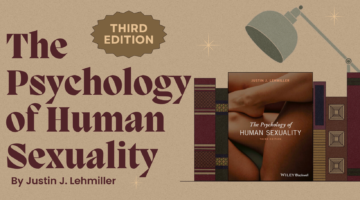Who Has More Sex Dreams: Singles or People in Relationships?
February 1, 2021 by Justin Lehmiller
Most people report having dreams about sex at least occasionally. In fact, research has found that the vast majority of both men (93%) and women (86%) say they have had sex dreams before [1] and, further, that about 1 in every 5 recalled dreams is about sex [2].
But what predicts whether and how often people dream about sex? Previous research has found a gender difference, such that men tend to have more sex dreams than women. Sex dreams are also related to age, with younger adults reporting them more often than older adults.
Does sex dream frequency also depend upon one’s relationship status? According to the continuity hypothesis, our dreams are—to some extent—a reflection of what happens in our waking life. In other words, what goes on in our everyday life gets transferred over into our dream content. On average, singles tend to have less sex than people in relationships [3], so one might therefore predict that singles might have fewer dreams about sex.
A recent study sought to explore whether this is indeed the case [4]. Researchers conducted an online survey of 823 adults (467 women, 356 men; average age of 49), of whom about two-thirds were currently in a relationship. Participants were asked to estimate the percentage of all dreams they have that feature erotic content (e.g., flirting, kissing, sex, etc.).
Of course, it’s worth noting that this methodology has limitations—people might not remember or recall every dream they’ve had, and people’s estimates of their behavior in general aren’t entirely accurate. However, there isn’t really a better way of assessing this short of gathering reports of dreaming every morning when people wake up, which is obviously much more challenging to do. Also, even then, memories of dream content can be fleeting and quickly forgotten. All of this highlights the fact that studying dreaming is a complicated business.
Similar to previous studies, most participants (83%) reported having had erotic dreams. Also, men had sex dreams more often than women, and 17% of all dreams were categorized as sexual in nature (in other words, about 1 in 5).
However, it turned out that erotic dream frequency wasn’t really related to relationship status. For singles, 16.5% of their dreams were rated as sexual, compared to 17.3% among people in relationships who were living with a partner.
Those in relationships who were living apart had slightly higher rates of sex dreams (20.1%), while those who were widowed had the lowest rates (8.3%). While it might be tempting to conclude that widowed participants had fewer sex dreams simply because they were older (and older adults tend to have fewer sex dreams), the researchers statistically controlled for age in their analyses, which suggests that this isn’t due to age-related differences. Instead, the researchers speculate that this may be due more to bereavement or grief.
The fact that singles and persons in relationships had similar rates of sex dreams doesn’t necessarily mean that the continuity hypothesis is wrong, however. Rather, it may be that the sexual content reflected in people’s dreams is more of a function of the degree to which people fantasize about sex in waking life. In other words, perhaps our fantasy content is being carried over into our dreams more so than our physical sexual behaviors.
To the extent that this reasoning is true, it would suggest that people who fantasize more in everyday life would have more sex dreams—and this could potentially explain the age and gender differences in frequency of sex dreams noted above, given that younger adults and men report fantasizing about sex more often on average.
Want to learn more about Sex and Psychology? Click here for more from the blog or here to listen to the podcast. Follow Sex and Psychology on Facebook, Twitter (@JustinLehmiller), or Reddit to receive updates. You can also follow Dr. Lehmiller on YouTube and Instagram.
[1] Schredl, M., Ciric, P., Götz, S., & Wittmann, L. (2004). Typical dreams: Stability and gender differences. Journal of Psychology, 138, 485–494.
[2] Schredl, M., Geißler, C., & Göritz, A. S. (2019). Factors influencing the frequency of erotic dreams: an online study. Psychology & Sexuality.
[3] Schneidewind-Skibbe, A., Hayes, R. D., Koochaki, P. E., Meyer, J., & Dennerstein, L. (2008). The Frequency of Sexual Intercourse Reported by Women: A Review of Community-Based Studies and Factors Limiting Their Conclusions. The Journal of Sexual Medicine, 5(2), 301-335. doi:10.1111/j.1743-6109.2007.00685.x
[4] Schredl, M., & Göritz, A. (2020). Frequency of erotic dreams and relationship status: An online study. International Journal of Dream Research, 131-133.
Image Source: 123RF

Dr. Justin Lehmiller
Founder & Owner of Sex and PsychologyDr. Justin Lehmiller is a social psychologist and Research Fellow at The Kinsey Institute. He runs the Sex and Psychology blog and podcast and is author of the popular book Tell Me What You Want. Dr. Lehmiller is an award-winning educator, and a prolific researcher who has published more than 50 academic works.
Read full bio >


